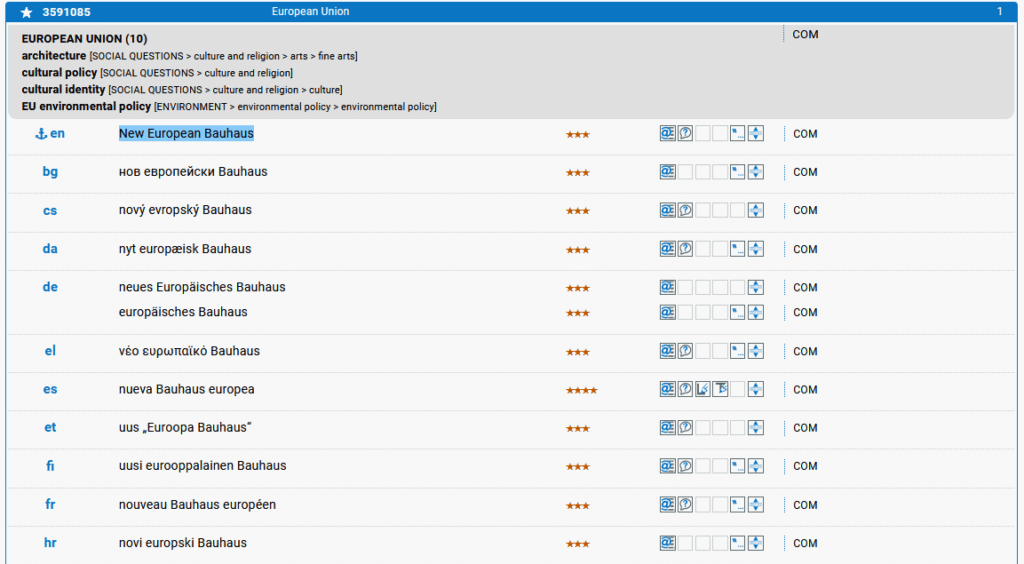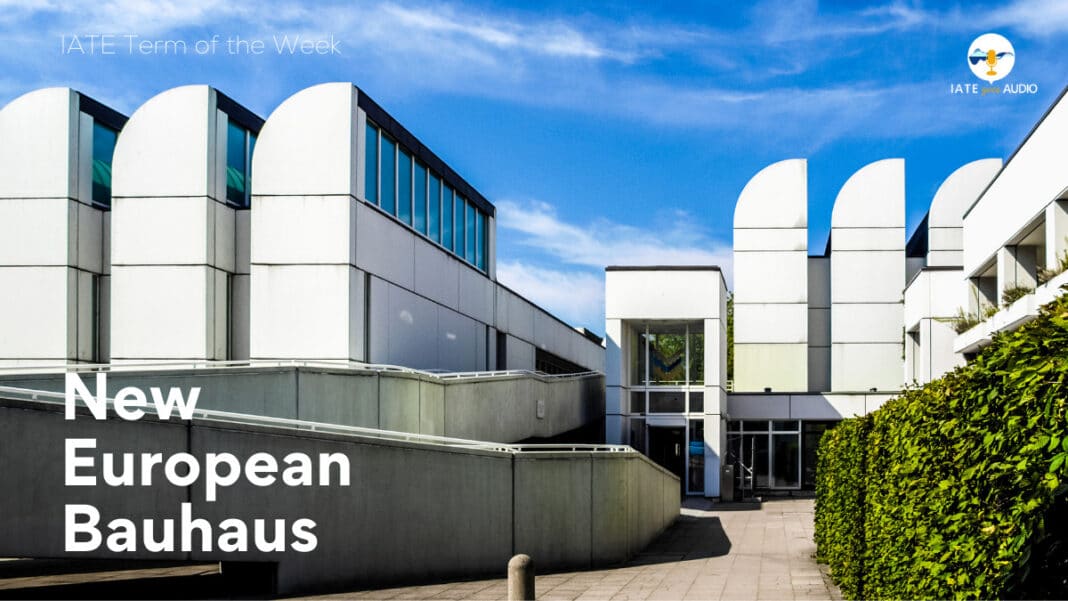On 18 January 2021, the European Commission launched the first phase of the New European Bauhaus. The initiative will spark a debate about Europe’s digital and socio-economical transformations and inspire citizens to rethink their personal living spaces.
“Our ambition is to develop an innovative framework to support, facilitate and accelerate the green transformation by combining sustainability and aesthetics. By being a bridge between the world of art and culture on one side and the world of science and technology on the other, we will make sure to involve society as a whole. It will kick-off a systemic change” – said Mariya Gabriel, the Commissioner for Innovation, Research, Culture, Education and Youth during the official inauguration.
The New European Bauhaus was first announced in September 2020 by Ursula Von der Leyen in her State of the Union speech before the European Parliament. The new President of the Commission outlined the objectives of NextGenerationEU, a recovery fund of 750 billion € set up to battle the effects of the pandemic and to prepare the community for future challenges.
The European Green Deal action plan is one of the priorities of the fund. It aims to reduce greenhouse gas emissions, restore biodiversity, and move towards a clean, circular economy. The New European Bauhaus shares all these goals, along with the objective of social inclusion, diversity and solidarity. It aspires ‘to make the Green Deal a cultural, human-centred and positive, “tangible” experience’. The authors of the project refer to it as a think-do tank. They believe that the exchange of ideas between Europeans of different backgrounds will to stimulate creativity and innovation.

Why is a forward-looking initiative named after the ground-breaking school of art and architecture started by Walter Gropius in Weimar over a hundred years ago? The multi-dimensional approach to design and the focus on the smart use of resources inspired the New European Bauhaus. The project links ecological postulates with culture, technology and art and brings them to our local communities. It promotes a vision of a circular economy in which materials are kept in use for long periods, but remain aesthetic and affordable.
How will the New European Bauhaus come to life? In the first phase, the European Commission will choose the best architecture and urban planning concepts and places where they can be introduced. A call for contributions from individual citizens and organisations is already open. Shaped in the initial stage, the initiative will later focus on implementing and disseminating the best methods, solutions, and practices. The final phase of the New European Bauhaus should start at the beginning of 2023.

IATE goes AUDIO provides short audio clips in different languages explaining IATE Terms of the Week in a clear and concise manner. The aim of this initiative is to make IATE terminology accessible to a wider audience.
This week, you can tune in to another IATE goes Audio feature: click below to listen to ‘New European Bauhaus’ explained in English.
Resources
ART. 2019. 10 Bauhaus principles that still apply today. [ONLINE] Available at: https://art.art/blog/10-bauhaus-principles-that-still-apply-today. [Accessed 5 February 2021].
Culture Action Europe. 2020. New European Bauhaus: a promising intention and a much needed open debate. [ONLINE] Available at: https://cultureactioneurope.org/news/new-european-bauhaus-a-promising-intention-and-a-much-needed-open-debate/. [Accessed 5 February 2021].
European Commission. 2021. New European Bauhaus: Commission launches design phase. [ONLINE] Available at: https://ec.europa.eu/commission/presscorner/detail/en/IP_21_111. [Accessed 5 February 2021].
European Union. 2020. The New European Bauhaus. [ONLINE] Available at: https://europa.eu/new-european-bauhaus/index_en. [Accessed 5 February 2021].
European Union. 2021. The New European Bauhaus explained. [ONLINE] Available at: https://europa.eu/new-european-bauhaus/system/files/2021-01/New-European-Bauhaus-Explained.pdf. [Accessed 5 February 2021].
Impakter. 2021. The New European Bauhaus: Combining Art and Science to a Sustainable End. [ONLINE] Available at: https://impakter.com/the-new-european-bauhaus-combining-art-and-science-to-a-sustainable-end/. [Accessed 5 February 2021].

Written by Magdalena Sikorska. She holds a Bachelor in Italian Language and Literature as well as master’s degrees in Journalism and Social Communication and Polish Philology.

